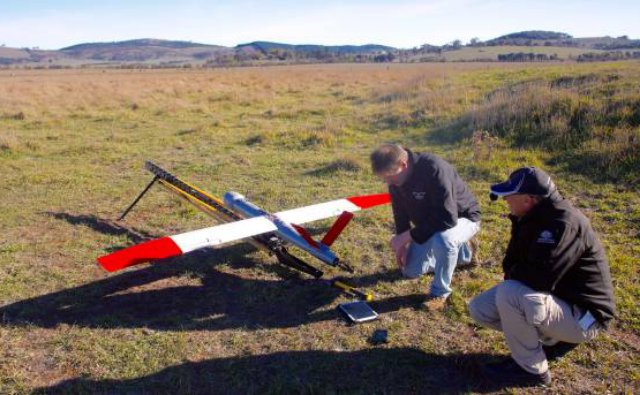The war on wild dogs in the Southern Downs region brought in the big guns last week, working with Ninox Robotics to utilise military-grade drones to seek out pest animal populations amongst inaccessible terrain along the New South Wales border.
Two years ago Queensland Country Lifereported on early plans by Sydney businessman Marcus Ehrlich to “marry thermal imaging with the latest warfare techniques” and come up with “a quantum leap for Australian agriculture’s capability to control invasive pest species”.
At the time he was looking for property owners in different parts of Australia willing to help him test his drones.
Since then he has received final regulatory approval from the Civil Aviation Safety Authority (CASA) and is deploying class-leading unmanned aerial systems (UAS) for customised services to a range of clients, including the Southern Downs Regional Council.
According to local laws officer, Craig Magnussen, the first commercial job undertaken by the company in Australia attracted a lot of interest when it was demonstrated at Terrica before 50 landholders.
Via a monitor they were shown a live feed of optical images from a flight, mostly livestock.
“They were there to see what the future of pest management might be,” he said. “Hopefully they walked away thinking of how they can use technology like this.”
Councils are the target for the initial operations of the technology, designed to provide efficient and safe monitoring at a cost-effective price.
Led by Ninox Robotics’ chief pilot, Colin Smith, a former Major in the Australian Defence Force, and a team of specially-trained UAS pilots and technicians, three days of drone flights took place over country where aerial baiting and shooting had earlier been undertaken.
“Aerial baiting in the Traprock is in inaccessible country so this helps us pinpoint where the dogs are living so we can find the best places to target,” Craig said.
September’s aerial bait run may be adjusted depending on what the drone flights tell them.
Craig said an aerial shoot with a chopper had taken place earlier in the year and the drone had been sent up to survey the same country to see how many wild dogs were left.
“We haven’t had the data analysed yet but we want to measure what we’ve done in dollar terms.
“We’re using it for our own purposes but we’re showcasing it for the state and the nation as well.
“It’s a glimpse of what may well become a routine part of our pest animal control in the future.”
Queensland Drought Relief funding of $20,000 was used to undertake the trial and Southern Downs partnered with Goondiwindi Regional Council and the Granite Borders Landcare Committee.
Craig said the price was comparable with hiring a helicopter at present.
Ninox’s Marcus Ehrlich said his company was eager to be working alongside forward-thinking organisations such as Southern Downs Regional Council who were looking for intelligent, cost-effective solutions to leverage practical, comprehensive information in real-time.
“The amount of interest we’ve received so far across different industries and levels of government signals that Australian businesses and landholders are eager to see how these drones can make a difference in their bottom line,” he said.
Other foundation clients include Biosecurity Queensland, and LogiCamms, a professional engineering and consulting services company for minerals, metals, hydrocarbons and infrastructure industries, which will rely on Ninox UAS for monitoring existing linear assets, as well as mapping remote assets and proposed infrastructure.
Photo: Ninox Robotics operators preparing to begin one of their military-grade drone trials.
Source: Queensland Country Life

